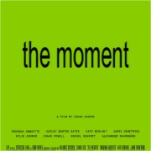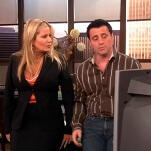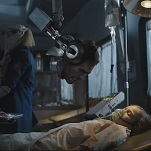During the summer of 1989, I compiled a list of every movie I’d ever seen (that I could remember). At the time, the Internet was known only to computer scientists, so this required heading to the local library and poring through various reference works—if memory serves, I used an annual set of volumes called Screen World, supplemented by the Motion Picture Guide. It took weeks, working a few hours at a time. I wrote all the titles down in a spiral notebook, which I then carried around, adding more films as I saw them, until I finally transcribed everything into my first primitive laptop (a PowerBook 100) three years later. And because I was working year by year, that information got burned into my brain, without my even trying. To this day, if you name a movie I’ve seen, I can almost always tell you what year it came out—a truly lame party trick, though it works better now that people can check on their smartphones. But the important thing was that I had—and still have—all of that information amassed. I’ve subdivided it by director and ranked everything in order of preference. I’ve conquered it… I guess.
One of the movies in my notebook back then was Diner. Diner was a big favorite among my circle of friends, probably because, despite being set in 1959, it seemed like a portrait of our own lives, which involved an inordinate amount of time sitting in large groups at Denny’s and talking about bullshit. I went to an all-male, Jesuit high school—it was technically called a college preparatory school—so even the strict gender division was familiar. We could quote the movie’s funniest dialogue verbatim, and would re-enact, say, the scene in which Paul Reiser angles to get some of Steve Guttenberg’s roast-beef sandwich without actually asking for it. The extent to which the movie is critical of its characters was mostly lost on us. In particular, it pains me to admit that I identified entirely with the gang’s one married guy (Daniel Stern) when he berates his wife (Ellen Barkin) for misfiling his records. It’s not that I didn’t recognize that he’s being an asshole… but he’s right, dammit! Or so I believed at the time. Here’s how the scene plays out:
There’s a danger here of drawing overly reductive conclusions about men vs. women, though that’s arguably Diner’s primary subject. Certainly, this scene would seem odd if you swapped the genders, and I don’t personally know any women who obsessively categorize objects in this way. (I’m sure they exist though.) Writer-director Barry Levinson pointedly opens the scene with close-ups of Stern’s and Barkin’s hands, performing very different tasks. Stern rifles through his collection, with practiced ease, filing albums that Barkin has apparently misplaced. (I confess to checking to see whether they’re really in alphabetical order and then chronological order; to the best that I can determine on a standard DVD, they are, at least in his jazz section.) Barkin paints her nails, though she claims to be doing a crossword puzzle when Stern calls to her. That casual lie interests me—is she afraid of looking shallow in his eyes? In any case, he’s manipulating things, while she’s manipulating herself. Arguably, the scene could end right here and convey the same basic information, though that would deprive the world of two superb performances and some great dialogue.
In the argument that follows, Stern treats Barkin like a parent or teacher dealing with a very slow child, hitting toxic levels of condescension. He’s ostensibly angry with her for not following his procedure, and that’s maybe justifiable in some small way, even if it doesn’t merit yelling and bullying. They are his records, after all (discounting the fact that being married makes all of their property joint), and when something’s in the wrong place, it becomes difficult to find, especially in a large collection. But that’s not really Stern’s problem. What irks him is that she doesn’t care the way he does. He’s invested so much of himself in this arcane world, and she never gives him a chance to impress her with his storehouse of knowledge. This is silly, and I’d like to think when he asks her to pick a record and quiz him, Levinson deliberately chose a single with the testiest-sounding B-side imaginable: Little Richard’s “Hey-Hey-Hey-Hey!” Because that’s what Stern essentially says in this scene. “Hey! Hey! Look over here. I know things. Obscure things.”
One thing that startled me this time is the way Stern handles his 45s. Some audiophiles treat the records themselves like holy objects, storing them in specially designed sleeves and only touching them by the edges, as if they were radioactive. Stern doesn’t do that. When he offers Barkin a bunch of singles, they’re all naked, so to speak, and could easily be scratching each other. For a moment, I thought that was an odd bit of carelessness—surely this guy wouldn’t be so cavalier with his treasures. But then I realized that he’s concerned with what each record represents, not with aesthetic or sonic perfection. And he doesn’t really understand what’s important. “When I listen to my records,” he tells Barkin at the end of his big emotional speech, “they take me back to certain points in my life.” That’s a phenomenon that we’ve all experienced, and there’s no reason why Barkin wouldn’t wholeheartedly agree. But it has nothing whatsoever to do with whether the record in question is rock ’n’ roll or rhythm and blues (as if there were a clear-cut division, especially in 1959), or whether the artist’s surname starts with J or B. Knowing the flip side doesn’t inspire a Proustian wave of nostalgia. That’s all about control, by way of mastery.
The saddest thing about this scene is that Stern has an opportunity to redeem himself, at least a little bit, and completely whiffs it. As obnoxious as his tirade is, it ends with an admission of how important Barkin is to him, in that he remembers the song that was playing the first time he ever saw her. Few people would be unmoved by hearing that. (Though, again, Levinson picks a significant title: “Ain’t That A Shame.” Instead of placing the emphasis on her, however, he places it on the song, thereby using it as a weapon. It’s easy to imagine a rephrasing of that anecdote that would have led to a passionate embrace rather than him stomping out the door on a “so there!” note of bitter triumph. As it is, Barkin’s teary expression in the final shot could signify her being hurt, touched, or (most likely) a combination of the two. It’s the perfect ending to the argument—not for their marriage, which is clearly in trouble, but dramatically speaking. And since I’d like to think that I’ve learned something over the years, let me conclude this piece by simply noting that I’ve never forgotten the first time I saw The Hudsucker Proxy, a particular repertory screening of Jailhouse Rock in San Francisco, or being strong-armed into watching Mrs. Soffel. They know who they are.







































